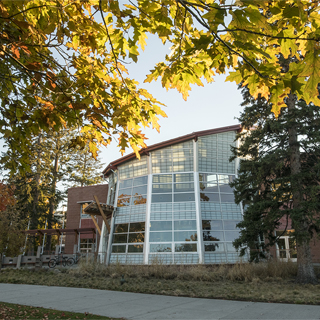Fort Berthold Reservation
Mandan, Hidatsa, and Arikara Tribes (Missouri River, West Central North Dakota)
The Mandan, Hidatsa, and Arikara nation is represented by the Four Sisters Garden. This garden resides on UM’s PEAS farm two miles north of campus next to Rattlesnake Creek.
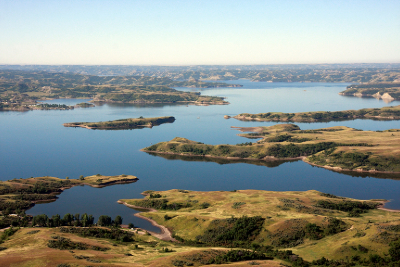
The Place
The traditional lands of the Mandan, Hidatsa, and Arikara encompassed an area of more than 12 million acres across the Missouri River basin through western Montana and Wyoming. The Mandan, Hidatsa, and Arikara people have lived alongside rivers for millenia.
Today, the Mandan, Hidatsa, and Arikara Nation is located on the Fort Berthold Indian Reservation in central North Dakota. The 988,000 acre reservation spans 4 distinct ecoregions surrounding the Missouri River: the Missouri Coteau Slope; the Missouri Plateau; badlands; and river breaks. The Missouri Coteau Slope and the Missouri Plateau are characterized by western mixed-grass and shortgrass prairie. The badlands are formed through water erosion and defined by their heavily eroded slopes, buttes, and steep canyons. The river breaks form broken terraces and uplands that descend to the Missouri River.
In 1946, the Army Corps of Engineers began constructing the Garrison Dam, flooding reservation bottomlands and effectively taking 152,360 acres of tribal land. Over a quarter of the reservation’s total land was inundated by the dam’s reservoir (known as Lake Sakakawea). The remaining tribal land was divided into five water-bound segments.
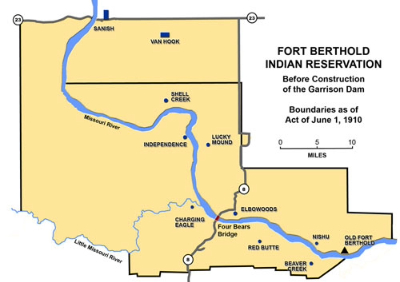
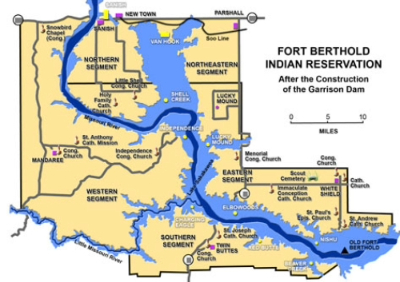
The People
The Mandan, Hidatsa, and Arikara are known as the Three Affiliated Tribes. The Arikara call themselves Sahnish and are referred to with that nomenclature. The Mandan and Hidatsa originally lived in forested regions and moved to the plains at different times. One theory is that the Mandan moved from southern Minnesota to the plains in South Dakota around 900 A.D. and migrated north along the Missouri River to North Dakota in 1000 A.D.. The Hidatsa moved from central Minnesota to eastern North Dakota, then migrated and joined the Mandan on the Missouri River around 1600 A.D.. According to anthropologists, the Sahnish people originally lived in an area that extended from the Gulf of Mexico through Kansas, Nebraska, and South Dakota.
Each tribe maintained separate bands, clan systems, and separate ceremonial bundles. After the devastation of the smallpox epidemics of 1792, 1836, and 1837, homogenous societies evolved for economic and social survival. All three tribes have practiced extensive agriculture for millenia, growing corn, beans, squash, sunflowers, and melons. The three tribes lived in earth lodges, hunted wild game and relied heavily on the buffalo for food, shelter, clothing. They also maintained an extensive trading network.
The construction of the Garrison Dam on the Missouri River in the 1940s displaced 325 families. Approximately 80 percent of tribal members were relocated to higher ground, where poor soil conditions and lack of water availability disrupted traditional agricultural practices.
Following several years of debate and negotiations, the U.S. House and Senate compensated the nation with $12,605,625 in settlement for damages caused by the dam. This settlement was $9 million less than the tribes felt was fair compensation. The final piece of settlement legislation denied their right to use the reservoir shoreline for grazing, hunting, fishing, or other purposes. It also rejected tribal requests for irrigation development and royalty rights on all subsurface minerals within the reservoir area.
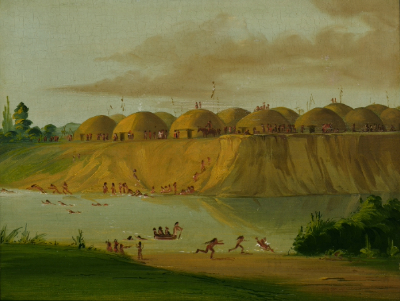
Hidatsa village with earth-covered lodges on the banks of the Knife River.
Painting by George Catlin
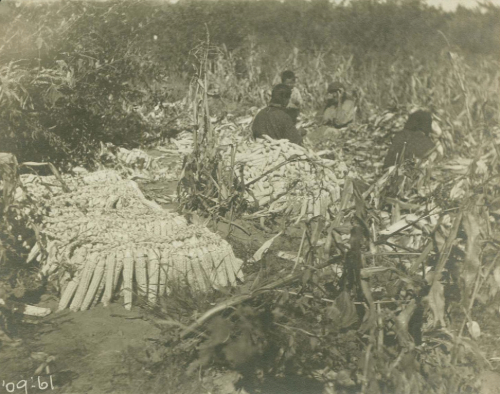
Hidatsa women braiding corn for drying in Maxidiwiac's (Buffalo Bird Woman) garden.
Photograph by Gilbert Wilson
The Plants
Mandan corn, Arikara sunflowers, and Hidatsa squash, red beans, and shield beans are planted in this garden.
These plants grow as companions, supporting and providing for one another. The corn supports the beans’ growing vines. The beans provide nitrogen to their neighbors. The squash acts as ground cover to prevent weed growth and retain soil moisture. The sunflowers also provide support and attract pollinators.
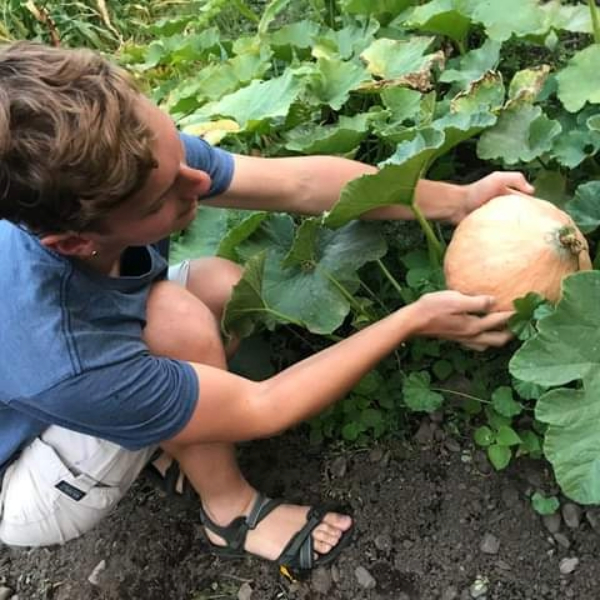
Elani Borhegyi holds up a growing squash.
Photo credit: All Nations Health Center
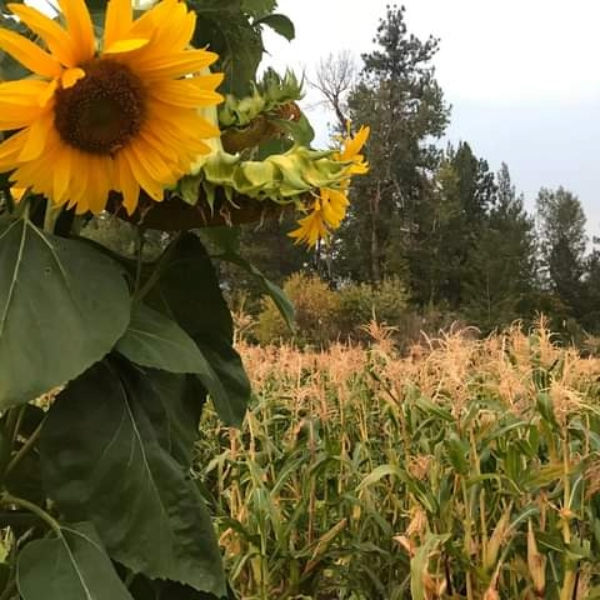
Corn and sunflowers in the Four Sisters Garden.
Photo credit: All Nations Health Center
